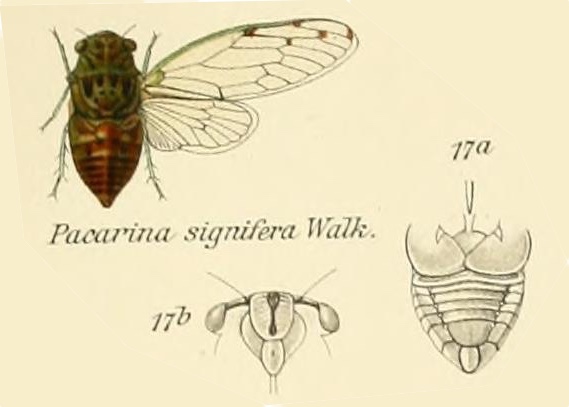Ioba limbaticollis (Stål, 1863). Sub-Saharan Africa, West Africa, including Nigeria, Ghana, the Democratic Republic of the Congo, Central African Republic, and Ivory Coast. This cicada has an amazing pronotal collar.
Scientific classification:
Family: Cicadidae
Subfamily: Cicadinae
Tribe: Platypleurini
Genus: Ioba
Species: Ioba limbaticollis (Stål, 1863)

Ioba genus description by W. L. Distant:
Characters. — Head (including eyes) wider than the base of the mesonotum, not truncate anteriorly, but with the lateral margins of the vertex a little oblique on each side and the front prominently produced; pronotum transverse, its posterior margin only a little less in length than the vertex, the lateral margins strongly and angularly produced on each side, the angulations medial, their apices when the tegmina are expanded reaching near or to about the end of the basal cell; mesonotum about as long as the pronotum; anterior femora with; one or more distinct spines, posterior and sometimes intermediate tibiae spined on apical areas; metasternum elevated and centrally sulcated ; tympana covered; opercula short, broad, their apices more or less convexly rounded; rostrum reaching the posterior coxae; tegmina with the basal cell broad, irregular, with four, or sometimes five, angles ; ulnar veins widely separated at their bases; interior ulnar area somewhat broadened at apex.
References:
- The illustration and genus description comes from the journal Genera Insectorum, and a specific article from 1913 by W. L. Distant titled Homoptera. Fam. Cicadidae, Subfam, Cicadinae. Read it on the Biodiversity Heritage Library website.
- Current species name verified using Allen Sanborn’s Catalogue of the Cicadoidea (Hemiptera: Auchenorrhyncha).










